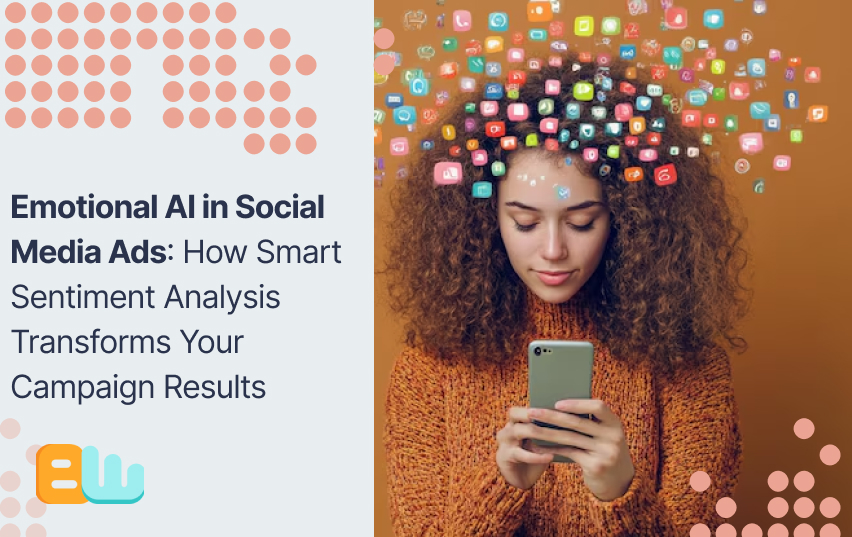
Understanding the Power of Emotional AI Technology
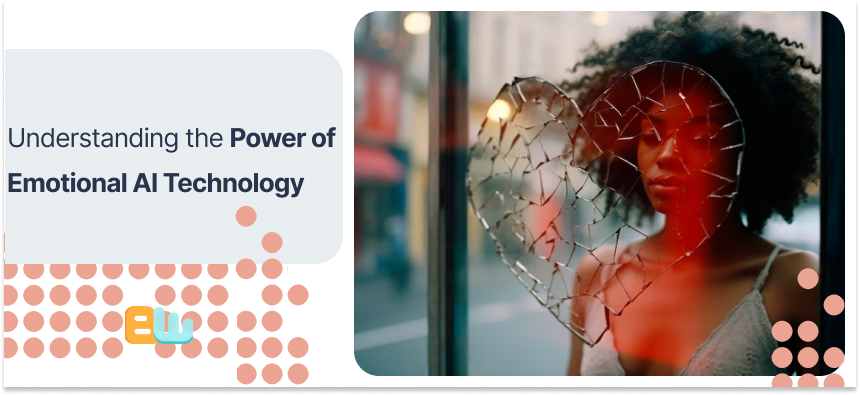
Emotions are the explanation if you’ve ever wondered why some advertisements halt your scroll while others vanish into digital obscurity. The most effective social media marketers of today use artificial intelligence to analyze the emotional DNA of their viewers rather than only speculating about what might connect.
What Exactly is Emotional AI and How Does It Work?
Technology that can identify, understand, and react to human emotions is referred to as emotional artificial intelligence (also known as affective computing). Emotional AI probes deeper into users’ feelings while interacting with material, in contrast to traditional analytics that monitor clicks and views.
The technology operates in a number of ways. Algorithms for computer vision examine face expressions in pictures and movies. Natural language processing analyzes the tone of communications and remarks. Emotional states can even be shown by screen time and cursor movements.
For marketers, this is going beyond basic engagement metrics and comprehending the feelings that motivate such behaviors. Is a user’s conduct motivated by curiosity, desire, or bewilderment while they stay on your advertisement?
The Science Behind Emotion Recognition in Digital Marketing
Emotional recognition is based on well-established psychological concepts and is not merely high-tech conjecture. Many emotional AI systems used in marketing today are based on Paul Ekman’s study on the universal emotions of happiness, sadness, anger, fear, disgust, and surprise.
These technologies examine verbal patterns and microexpressions that people would overlook. Users may frown for a brief moment during a video advertisement, for instance, indicating that they are confused by your message. This is important input that traditional focus groups might never be able to get.
5 Ways Emotional AI Transforms User Engagement Metrics
1. Sentiment analysis beyond positive/negative – With the help of advanced AI, marketers can gain a more sophisticated view of content success by detecting complex emotions like inspiration, trust, and nostalgia.
2. Real-time emotional journey mapping – Monitor emotional changes during a video advertisement to pinpoint the precise points at which involvement increases or decreases.
3. Emotional segmentation – Create more pertinent targeted categories by grouping audiences based on emotional reaction patterns rather than merely demographics.
4. Predictive emotional modeling – Before a campaign is fully launched, predict the emotional reactions of certain audience segments.
Make sure your brand elicits comparable emotional patterns across various platforms and content kinds by implementing cross-channel emotional consistency.
How Major Platforms Are Implementing Emotional AI
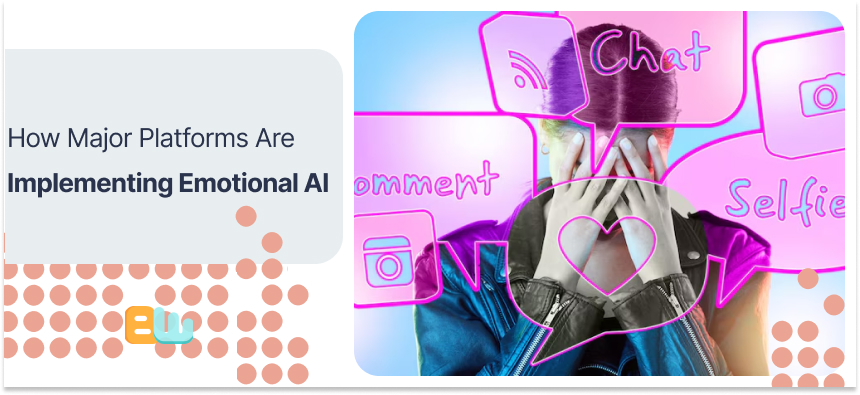
Every social media network has its own emotional AI features, frequently without referring to them as “emotion recognition tools.” Let’s look at how this technology is being used by the main networks.
Facebook’s Emotion Detection Tools for Advertisers
Facebook has more sophisticated emotion analysis tools than most marketers are aware of. The platform’s technologies continue to examine emotional reactions in order to optimize ad delivery, even if it discontinued its explicit “Reaction” targeting due to privacy concerns.
When deciding which advertisements to display to which users, the platform’s “Estimated Action Rates” algorithm takes emotional engagement cues into account. The algorithm gives preference to content that elicits strong positive emotional reactions, as indicated by engagement patterns, time spent, and other indicators.
Instagram’s Visual Sentiment Analysis Capabilities
Instagram is an ideal testing environment for image-based emotional AI because of its visual-first design. The platform’s algorithms examine composition, topic matter, color psychology, and other visual components that elicit strong feelings.
Instagram gives advertisers access to “Pulse Surveys” that link visual material with emotional reactions, assisting them in determining whether visual strategies emotionally connect with their target markets.
How TikTok Leverages Emotional Response for Ad Placement
TikTok’s incredibly potent algorithm has completely changed emotional targeting. In addition to analyzing the content you interact with, the platform’s “For You Page” gauges how strongly you feel about that interaction.
TikTok provides advertisers with emotional response data and “Feeling” tags that illustrate how viewers feel about particular aspects of the video. This aids companies in developing more effective TikTok-specific advertising.
LinkedIn’s Professional Approach to Emotional Intelligence
Even the most professional network, LinkedIn, acknowledges the emotional aspects of business decisions. Sentiment analysis for comments and reactions is one of their content analytics solutions, which helps B2B marketers comprehend how people feel about thought leadership content.
LinkedIn’s Insight Tag identifies the emotional triggers that influence business-to-business decision-making by monitoring how professionals react to content about business difficulties.
7 Strategic Benefits of Emotional AI for Marketers
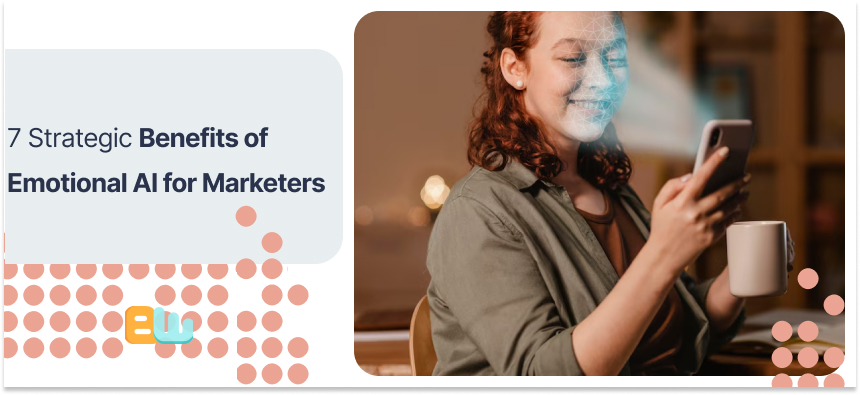
Traditional targeting cannot match the tangible benefits of using emotional AI into your social approach. Results are transformed by emotionally intelligent marketing in the following ways:
Improved Audience Targeting Through Sentiment Recognition
Emotional targeting divides the audience into groups according on people’s feelings rather than their physical characteristics. Since emotional states are a better indicator of receptiveness to messages, this strategy frequently performs better than demographic targeting.
You can create hyper-relevant campaigns by finding consumers who frequently react to particular themes with particular emotions. For instance, focusing on consumers who, when presented with difficult product information, show curiosity (as opposed to annoyance).
Creating Personalized Ad Experiences That Drive Conversion
Emotional customization implies tailoring your message to the emotional context of the recipient, not just showcasing things they might find appealing. Now, advertisers may produce dynamic material that changes according to emotional cues they detect.
For instance, a vacation agency may present images of a calm beach to consumers who are showing signs of tension, while providing content with an adventure theme to customers who are showing signs of boredom.
This strategy is already being used by companies like Spotify, who modify their ad creatives according on the emotional context of recently played music. Their click-through rates have risen by up to 35% as a result of this emotional-context congruence.
Real-Time Campaign Optimization Based on Emotional Responses
It may take days or weeks for traditional A/B testing to get useful results. Rapid optimization is made possible by emotional AI’s instant response on audience sentiment.
Emotional cues are now used by smart advertising to adjust in real time. It is possible to automatically simplify messages or provide explanatory content if a campaign elicits bewilderment rather than curiosity.
Building Stronger Brand-Consumer Emotional Connections
Emotional rather than transactional brand ties are the most valuable. Emotional AI assists in determining which elements of your brand narrative elicit genuine emotional responses as opposed to pique attention.
Marketers can enhance the features that elicit true emotional resonance by monitoring consumers’ emotional reactions to various brand components. This creates what Kevin Roberts refers to as “Lovemarks”—brands that inspire both affection and respect.
Ethical Considerations and Privacy Concerns
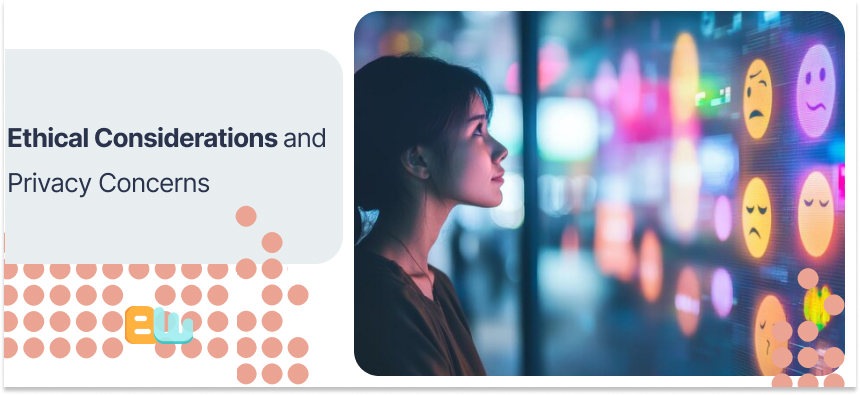
There are serious ethical obligations associated with the power of emotional AI. As marketers, we have to strike a balance between efficacy and consumer privacy and autonomy.
Navigating Consumer Data Rights in Emotion-Based Advertising
One type of personal information that is especially sensitive is emotional data. Platforms may lawfully gather this data in accordance with their present terms of service, but ethical marketers must to think about whether users actually comprehend this collection.
79% of Americans are worried about how businesses use personal data, according to a Pew Research study, and collecting emotional data is probably going to make them even more worried.
Transparency Issues: Should Users Know Their Emotions Are Tracked?
Ethical conflicts arise when emotional tracking is invisible. Customers frequently aren’t aware that their emotional reactions are being examined, in contrast to overt data collection methods like questionnaires.
“Emotion tracking notifications” have been introduced by several systems in an effort to close this transparency gap. Think about whether, as a marketer, you would feel comfortable disclosing your emotional targeting strategies to customers.
Balancing Effective Marketing with Ethical AI Implementation
Emotional intelligence and ethical boundaries are combined in the most sustainable method. This entails not manipulating but rather harnessing emotional insights to produce truly beneficial experiences.
Find out if your emotional targeting merely takes advantage of weaknesses or if it aids customers in making better decisions. Whether you’re addressing a genuine customer issue or just generating a sense of need is frequently where the distinction lies.
Implementing Emotional AI in Your Social Strategy
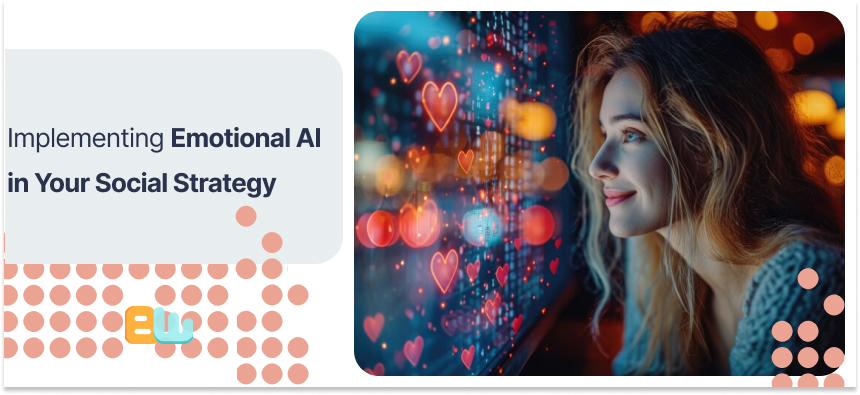
Using the appropriate tools and techniques is essential when transitioning from theory to practice. You can use emotional AI in your social media ads in the following ways:
Essential Tools for Emotional Analysis in Social Campaigns
Several accessible platforms can help marketers without data science teams implement emotional analysis:
– Affectiva provides emotion recognition for video content, helping brands understand emotional responses to video ads
– IBM Watson Tone Analyzer detects emotional tones in text content and comments
– Brandwatch Consumer Research includes sentiment analysis tools that detect emotional patterns in social conversations
– Sprinklr’s AI Social Listening identifies emotional themes in discussions about your brand or industry
Step-by-Step Guide to Emotion-Driven Ad Creation
1. Determine the target emotions: Choose the emotional states that most closely match the benefits of your product and your brand values. Assign these feelings to the various phases of your client’s journey.
2. Create emotion-specific content: Create variants intended to elicit particular feelings. Think on rhythm, narrative structure, and color psychology.
3. Emotional testing: Use the available AI techniques to evaluate emotional reactions to material before it is fully deployed, testing it with tiny audience segments.
4. Create emotional segments: Rather of relying solely on demographics or behaviors, create audience groups based on emotional response patterns.
5. Ads with dynamic features that adjust in response to identified emotional cues from audience interactions should be used when launching responsive campaigns.
6. Emotional KPIs: Throughout the campaign, keep an eye on both normal performance measures and emotional response indicators.
7. Adapt depending on emotional insights: Constantly improve targeting and message by analyzing data on emotional input.
Measuring Success: Key Performance Indicators for Emotional Campaigns
While traditional measurements are still crucial, emotive advertising call for different methods of measurement:
Depth of emotional engagement: How deeply, not just frequently, do consumers interact emotionally?
– Emotional consistency: Do your desired emotional targets and emotional responses match?
– Emotional journey completion: Do users follow your intended emotional arc through the campaign?
– Sentiment conversion correlation: Which emotional patterns most strongly predict conversion actions?
– Indicators of emotional loyalty: Are you creating enduring emotional bonds that go beyond campaigns?
When Should You Use Emotional AI vs. Traditional Targeting?
Emotional AI works best for:
– Complex purchase decisions with strong emotional components
– Relationship-development-focused brand-building initiatives
– Products that address emotional demands (status, security, and belonging) –
– Circumstances in which context and timing have a major influence on receptivity
Traditional targeting remains effective for:
– Simple utility purchases with minimal emotional investment
– Straightforward direct response campaigns
– Products purchased primarily for functional benefits
– Situations where demographic factors strongly predict needs
The Future of Emotional AI in Social Advertising

The field of emotional AI is developing quickly. Understanding new capabilities and getting ready for the upcoming tool generation are essential for staying ahead.
Emerging Trends in Cross-Platform Emotional Analysis
Current emotional analysis happens mostly within platform silos, but the future belongs to cross-platform emotional intelligence. Emotional journeys across many touchpoints are being tracked by new tools.
Marketers will have a better understanding of how consumers’ emotions change when they switch between platforms with the use of unified emotional profiles. This comprehensive approach identifies the platforms that best elicit particular emotional states in various audience categories.
How Will AI-Driven Empathy Transform Marketing by 2025?
Anticipate AI systems that are advanced enough by 2025 to comprehend the contextual elements that contribute to emotions in addition to detecting them. Much more sophisticated marketing strategies will be made possible by this contextual empathy.
Individual-level emotional forecasting will replace general patterns in predictive emotional modeling. Marketers will be able to predict the emotional resonance that certain content parts may have with individual users.
Preparing Your Brand for Next-Generation Emotional Intelligence
To stay ahead of these developments:
1. Get started on creating first-party emotional data right away. To create baselines, gather and examine the emotional reactions to your existing material.
2. Create a framework for emotional intent that links desirable emotional states to various marketing goals and phases of the client experience.
3. Teach the ideas of emotional design to your creative teams. Even the most advanced AI systems still need emotional intelligence to lead human creativity.
4. Create moral standards for the use of emotional data before laws need them. Brands will gain more consumer trust if they take proactive measures to address ethical issues.
5. Use small pilot projects to test new emotional AI tools in order to get institutional expertise ahead of rivals.
Case Studies: Successful Emotional AI Campaigns
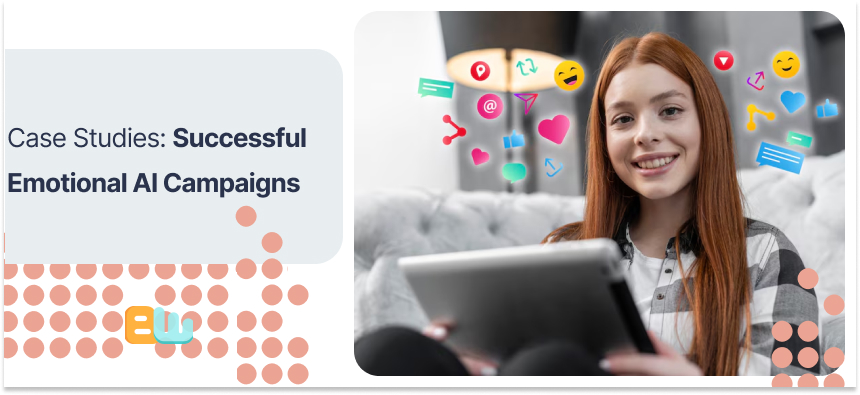
These actual cases show how companies are already using emotional AI to improve the outcomes of their social media marketing.
How Nike Used Emotional Targeting to Increase Engagement
Emotional AI was employed in Nike’s “Dream Crazy” campaign, which starred Colin Kaepernick, to determine which audience segments were most responsive to emotionally charged messaging. Nike chose to employ emotional analysis to determine which user segments would react favorably to purpose-driven content rather than steer clear of controversy.
Their approach included:
– Analyzing emotional responses to previous socially-conscious content
– Identifying emotional signals that predicted brand advocacy
– Adapting the delivery of advertisements dynamically in response to early emotional reaction patterns
Spotify’s Approach to Mood-Based Advertisement Success
Spotify’s contextual targeting system was the first to use emotion-based advertising. Their AI examines people’s listening habits and the emotions connected to them in addition to the music they listen to.
Advertisers can contact users based on the emotional context of their present behavior according to their “Mood Targeting” strategy. For instance, an energy drink might target playlists that encourage workouts, while a relaxing app might target individuals who are listening to music that evokes feelings of tension.
Small Business Success Stories with Limited AI Budgets
Giants with huge resources aren’t the only ones who can benefit from emotional AI. F45 Training, a nearby fitness center, employed simple emotional analysis techniques to determine which elements of their social media posts made prospective new members feel more motivated as opposed to anxious.
By analyzing comment sentiment and emoji usage, they discovered that transformation stories created inspiration, while certain workout footage triggered intimidation. In order to provide context for more difficult topics, they modified their content approach to place more emphasis on motivating emotional responses.
Without raising ad budget, they were able to increase trial signups by 24% thanks to this emotionally-informed strategy, proving that even easily accessible emotional analysis tools may greatly boost marketing efficacy.
The Emotional Intelligence Advantage
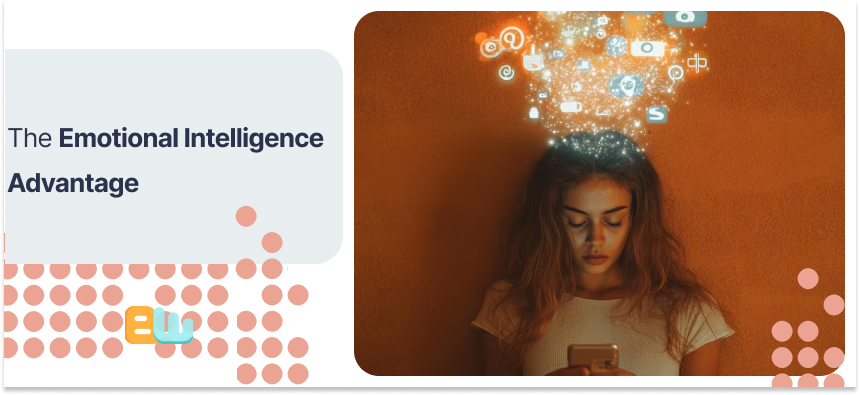
Emotional intelligence gives your brand the edge it needs to stand out from the crowd on social media platforms, which are becoming overflowing with material. You can develop ads that connect with your audience on a deeply human level by learning not only what they do but also how they feel.
The brands that most successfully engage with the emotional lives of their target consumers will be the ones that prosper in the upcoming era of digital marketing, not the ones with the most resources. By carefully applying emotional AI while adhering to moral principles, you set up your company for more meaningful interaction and lasting connections.
Start by taking an empathetic look at your present analytics. Which emotional trends could your engagement data be concealing? What kind of material frequently elicits favorable emotional reactions? These inquiries represent the start of the path toward emotionally aware marketing.
Will you follow in the footsteps of people who possess emotional intelligence, or will you fall behind them?
#emotionalai #socialmediamarketing
